Shennongjia―the Snowy Wonderland
Updated:2024-03-05 Source:Shennongjia National Park
Years ago, during a holiday break, my brother and I went on a road trip to Shennongjia. Even though it was a hot summer, we felt like stepping into a giant air-conditioned room and a massive oxygen bar. Shennongjia, known as the "Roof of Central China," lived up to its reputation.
Standing on the platform of Shennong Valley, we were enchanted by the cool and refreshing mountain breeze, lingering on with no intent to leave. Local people mentioned that the wind was invigorating in the season, but in winter, it would be bitterly cold, prompting people to avoid it.
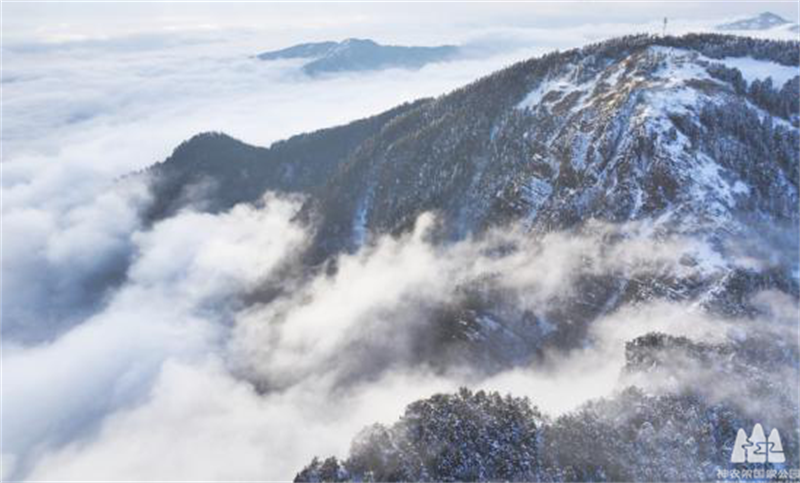
By fortunate coincidence, this winter, we were selected as the trainees at the International Communication Center of Hubei Daily Media Group. Our leader decided to send us to Shennongjia National Park to discover the lives of golden snub-nosed monkeys and the monkey caretakers.
My experience was entirely different this time. On the one hand, we visit here this time as journalists instead of tourists. On the other hand, last time we mainly admired the breathtaking scenery, whereas this time, we delved into understanding the abundant natural resources of Shennongjia National Park.
The weather was perfect. After days of rain and snow, it suddenly cleared up, revealing a backdrop of azure blue sky against the snow-capped mountains and sea of clouds. The lighting was exceptional, so was the contrast ratio, making the scenery particularly pleasing as far as the eye can see.
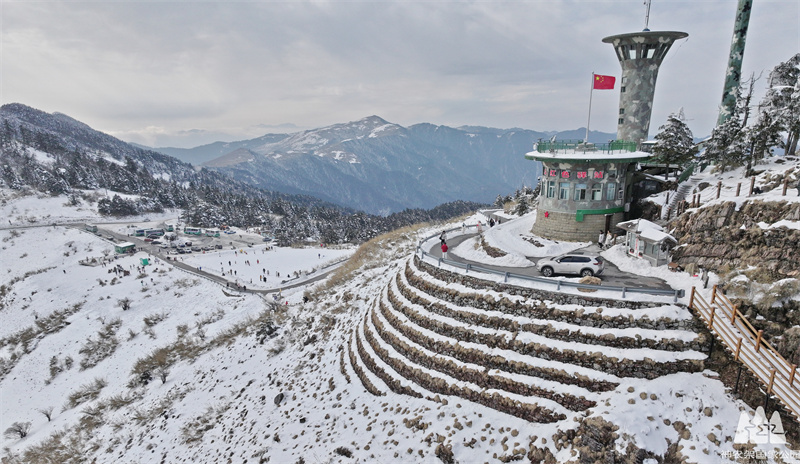
The mountains blanketed under thick snow, and icicles hanging from trees, it was presenting a scene of the severe winter. “The First Watchhouse in Central China” is built on Shennongding, the highest summit of Shennongjia at an altitude of over 3000 meters, catching our eyes with the camouflage exterior and fluttering National Flag. Seven generations of observers relayed to safeguard the thousands of square kilometers of valleys and mountains day and night tirelessly.
Shennong Valley was shrouded in mist, obscuring the stone forests and primeval forests in the valley. Even the majestic mountain ranges only revealed slight ridges. As sunlight penetrated the clouds, creating a phenomenon known as the "Tyndall effect", rays of light pierced through the misty mountains and sky, playing a rare and majestic symphony of nature.
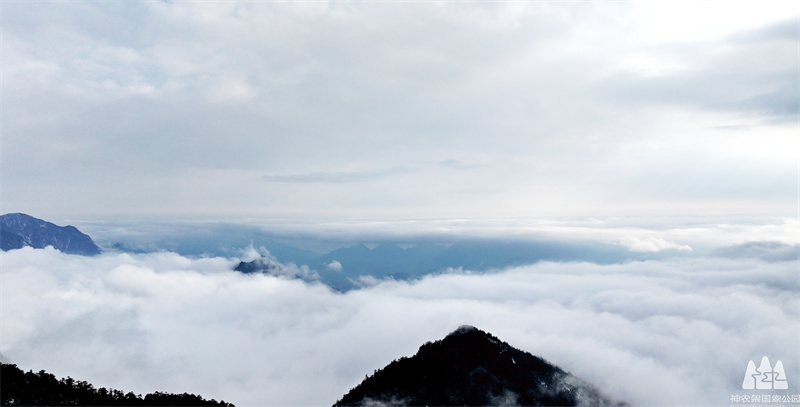
Wu Chunlin, the excellent driver from the National Park, effortlessly navigated the car on the icy road. Descending from the Tianjiling and Shennongding, we made a sharp turn and entered a valley. Springs formed from melting ice and snow trickled down, adding up to clear pools that glistened like amber or agate setting in white jade.
A series of wild animal footprints were clearly visible on the snowy road. Director Du, who accompanied us throughout the journey, was well acquainted with these tracks. "These footprints belong to cloven-hoofed animals, possibly sambar deer, or it could be footsteps of takin, Chinese goral, musk deer, muntjac, Reeves's muntjac and so on." he remarked. Director Du's knowledge of the wildlife resources in Shennongjia National Park was extensive. According to him, this hidden gem was home to over 140 species of nationally protected wild animals.
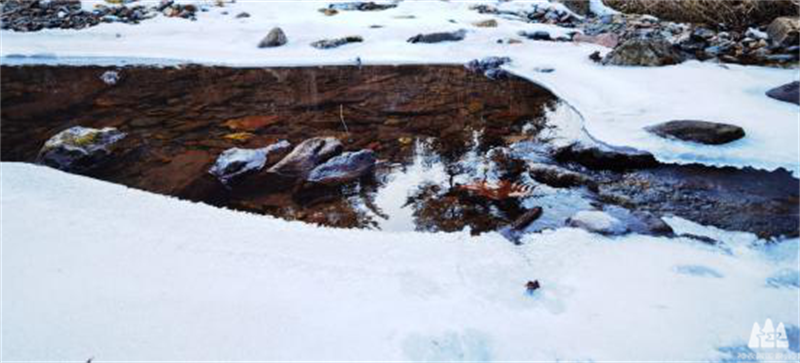
As we walked along the valley's boardwalk, a voice unlike any we'd ever heard before caught our ears, reminiscent of Scottish bagpipes, crisp with a tremolo. Director Du explained it the call of golden snub-nosed monkeys. In the midst of our conversation, we saw of several golden snub-nosed monkeys on a barren slope. Director Du informed us that Dalongtan is a crucial research base for golden snub-nosed monkeys, housing a wild monkey group year-round, comprising approximately seven to eight family units, along with a group of bachelor monkeys. Even more remarkable is that Shennongjia is the easternmost place where the golden snub-nosed monkey inhabit.
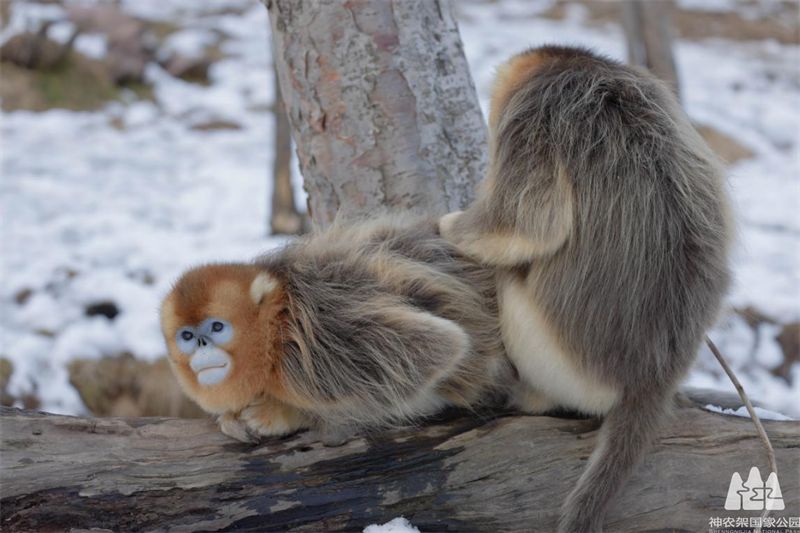
Witnessing these mountain geniuses, I felt a greater sense of awe, curiosity, and pride in Hubei's possession of Shennongjia National Park. One can only speculate how many mysteries lie in these mountains. The history spanning 1.6 billion years can explain why this place boasts five world-renowned titles―"World Biosphere Reserve", "World Geopark", "World Natural Heritage", "Wetlands of International Importance" and “Green List of Protected and Conserved Areas”.
After a day's journey, although the surroundings appeared desolate, I could easily envision the vibrant scene of spring blossoms, verdant summer landscapes, and multicolored autumn forests. Shennongjia National Park owns a forest coverage rate of over 96%, harboring the most intact vertical spectrum of vegetation in the Northern Hemisphere. This includes evergreen broad-leaved forest belts, evergreen broad-leaved deciduous mixed forest belts, coniferous and broad-leaved mixed forest belts, and coniferous forest belts, earning it the title of the "green miracle" along the 31st parallel north. Director Du mentioned that the national park is currently undergoing a three-year comprehensive survey of its natural resources, and the exact number of its resources will only be determined after the survey concludes next year. Previous surveys have recorded 664 species of terrestrial vertebrates, 75 species of fish, and 5,385 species of insects, making it one of the 14 globally significant biodiversity conservation sites and a nationally crucial species gene bank.
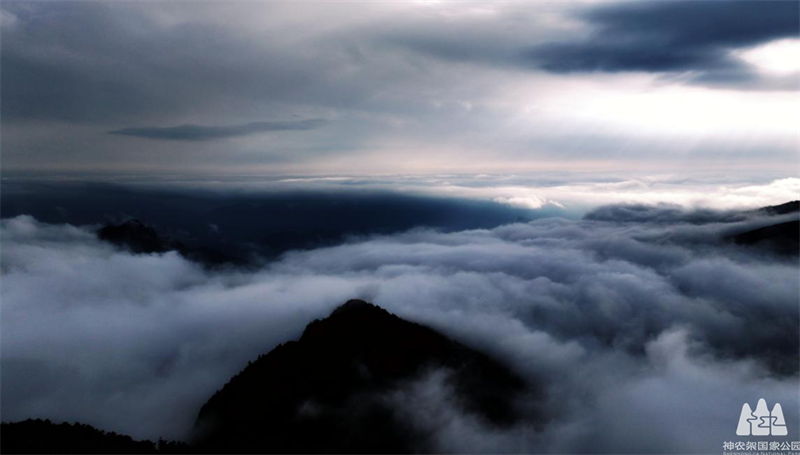
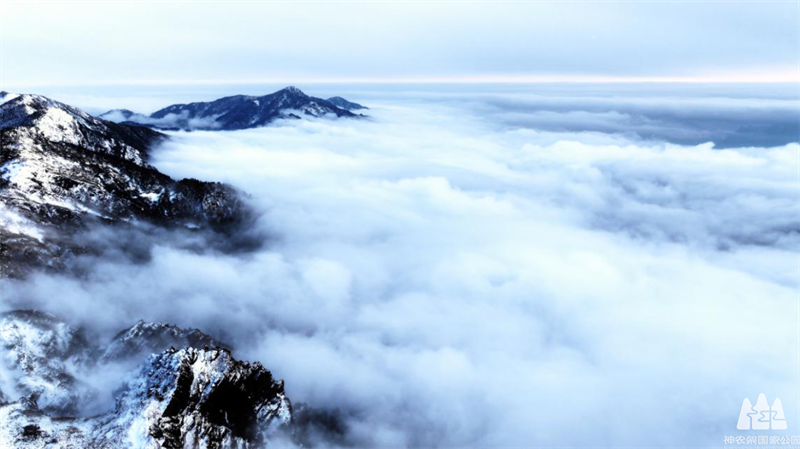
The endearing eyes of the golden snub-nosed monkeys and Director Du's proud and confident presentation made me understood why National Geographic referred Shennongjia as a "must-visit destination during lifetime." This wonderland is not only nature's masterpiece but also a treasure trove of resources.
Descending from the snow-capped peak, the snow was getting less and less while the temperature was rising. The hustle and bustle of Muyu Town seemed distant from Shennongding. This was our day's journey: traversing through the natural wonder, witnessing the profound changes over a billion years, marveling at the abundant resources of our motherland, and deeply appreciating the selfless dedication of those protecting the Shennongjia National Park.
I finally understood why this place bred botanists who grew up patrolling its paths, why it nurtured green guardians who steadfastly stuck to their posts for decades, and why so many park personnel willingly engraved their lives into these mountain forests during their youth. They knew the value of their work, and here, amidst the endless natural mysteries, they have shaped the mountains, and the mountains have achieved them.
Shennongjia deeply attracts me, and I firmly believe that even if I were to visit a thousand or ten thousand times, it would only grow more mysterious and enchanting. Every person here has countless stories to tell, and every species holds scientific mysteries waiting to be explored endlessly.(By Tu Wei Photo by Tian Yu)
Copyright Shennongjia National Park
Address:36 Chulin Road, Muyu Town, Shennongjia Forestry District, Hubei Province 鄂ICP备18005077号-3
Address:36 Chulin Road, Muyu Town, Shennongjia Forestry District, Hubei Province 鄂ICP备18005077号-3
Email:2673990569@qq.com
Phone:0719-3453368
Phone:0719-3453368


TOP

